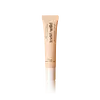What's inside
What's inside
 Key Ingredients
Key Ingredients

 Benefits
Benefits

 Concerns
Concerns

 Ingredients Side-by-side
Ingredients Side-by-side

Phytosteryl/Isostearyl/Cetyl/Stearyl/Behenyl Dimer Dilinoleate
Skin ConditioningHydrogenated Polyisobutene
EmollientBis-Diglyceryl Polyacyladipate-2
EmollientDiisostearyl Malate
EmollientDicaprylyl Carbonate
EmollientTribehenin
EmollientSynthetic Wax
AbrasiveCamellia Japonica Seed Oil
EmollientVp/Hexadecene Copolymer
Ethylene/Propylene/Styrene Copolymer
Candelilla Wax Esters
Parfum
MaskingDehydroacetic Acid
PreservativeCopernicia Cerifera Wax
Butylene/Ethylene/Styrene Copolymer
Tocopherol
AntioxidantPentaerythrityl Tetra-Di-T-Butyl Hydroxyhydrocinnamate
AntioxidantCeramide NP
Skin ConditioningWater
Skin Conditioning1,2-Hexanediol
Skin ConditioningLeontopodium Alpinum Callus Culture Extract
AntioxidantEthylhexylglycerin
Skin ConditioningSodium Hyaluronate
HumectantPhytosteryl/Isostearyl/Cetyl/Stearyl/Behenyl Dimer Dilinoleate, Hydrogenated Polyisobutene, Bis-Diglyceryl Polyacyladipate-2, Diisostearyl Malate, Dicaprylyl Carbonate, Tribehenin, Synthetic Wax, Camellia Japonica Seed Oil, Vp/Hexadecene Copolymer, Ethylene/Propylene/Styrene Copolymer, Candelilla Wax Esters, Parfum, Dehydroacetic Acid, Copernicia Cerifera Wax, Butylene/Ethylene/Styrene Copolymer, Tocopherol, Pentaerythrityl Tetra-Di-T-Butyl Hydroxyhydrocinnamate, Ceramide NP, Water, 1,2-Hexanediol, Leontopodium Alpinum Callus Culture Extract, Ethylhexylglycerin, Sodium Hyaluronate
Diisostearyl Malate
EmollientHydrogenated Polyisobutene
EmollientBis-Behenyl/Isostearyl/Phytosteryl Dimer Dilinoleyl Dimer Dilinoleate
EmollientPentaerythrityl Tetraethylhexanoate
EmollientMicrocrystalline Wax
Emulsion StabilisingSynthetic Fluorphlogopite
Dextrin Palmitate
EmulsifyingButyrospermum Parkii Butter
Skin ConditioningSilica Dimethyl Silylate
EmollientEthylene/Propylene/Styrene Copolymer
Synthetic Wax
AbrasiveEuphorbia Cerifera Wax
Squalane
EmollientPunica Granatum Seed Oil
EmollientHydrolyzed Hyaluronic Acid
HumectantCaprylic/Capric Triglyceride
MaskingTocopherol
AntioxidantButylene/Ethylene/Styrene Copolymer
Dehydroacetic Acid
PreservativeGlycine Soja Sterols
EmollientLinoleic Acid
CleansingPhospholipids
Skin ConditioningRosa Damascena Flower Oil
MaskingPentaerythrityl Tetra-Di-T-Butyl Hydroxyhydrocinnamate
AntioxidantWater
Skin ConditioningButylene Glycol
Humectant1,2-Hexanediol
Skin ConditioningNelumbium Speciosum Flower Extract
Skin ConditioningOligopeptide-1
Skin ConditioningGeraniol
PerfumingCitronellol
PerfumingDiisostearyl Malate, Hydrogenated Polyisobutene, Bis-Behenyl/Isostearyl/Phytosteryl Dimer Dilinoleyl Dimer Dilinoleate, Pentaerythrityl Tetraethylhexanoate, Microcrystalline Wax, Synthetic Fluorphlogopite, Dextrin Palmitate, Butyrospermum Parkii Butter, Silica Dimethyl Silylate, Ethylene/Propylene/Styrene Copolymer, Synthetic Wax, Euphorbia Cerifera Wax, Squalane, Punica Granatum Seed Oil, Hydrolyzed Hyaluronic Acid, Caprylic/Capric Triglyceride, Tocopherol, Butylene/Ethylene/Styrene Copolymer, Dehydroacetic Acid, Glycine Soja Sterols, Linoleic Acid, Phospholipids, Rosa Damascena Flower Oil, Pentaerythrityl Tetra-Di-T-Butyl Hydroxyhydrocinnamate, Water, Butylene Glycol, 1,2-Hexanediol, Nelumbium Speciosum Flower Extract, Oligopeptide-1, Geraniol, Citronellol
 Reviews
Reviews

Ingredients Explained
These ingredients are found in both products.
Ingredients higher up in an ingredient list are typically present in a larger amount.
1,2-Hexanediol is a synthetic liquid and another multi-functional powerhouse.
It is a:
- Humectant, drawing moisture into the skin
- Emollient, helping to soften skin
- Solvent, dispersing and stabilizing formulas
- Preservative booster, enhancing the antimicrobial activity of other preservatives
We don't have a description for Butylene/Ethylene/Styrene Copolymer yet.
Dehydroacetic Acid is fungicide and bactericide. It is used as a preservative in cosmetics. Preservatives help elongate the shelf life of a product.
Dehydroacetic Acid is not soluble in water.
Diisostearyl Malate is an emollient and most often used in lip products. It comes from isostearyl alcohol, a fatty acid, and malic acid, an AHA.
As an emollient, Diisostearyl Malate helps create a thin film on your skin to trap moisture in. This helps keep your skin soft and smooth.
We don't have a description for Ethylene/Propylene/Styrene Copolymer yet.
Hydrogenated Polyisobutene is a synthetic polymer. Polymers are compounds with high molecular weight. Hydrogenated Polyisobutene is an emollient and texture enhancer.
In one study, Hydrogenated Polyisobutene showed better skin hydration levels than Caprylic/Capric Triglyceride. As an emollient, it helps keep your skin soft and hydrated by trapping moisture in.
Hydrogenated Polyisobutene is often used as a mineral oil replacement.
Learn more about Hydrogenated PolyisobutenePentaerythrityl Tetra-Di-T-Butyl Hydroxyhydrocinnamate (long name, huh?) is a synthetic antioxidant.
It is used to help stabilize other antioxidants or prevent the color from changing in a product.
As an antioxidant, it helps fight free-radical molecules. Free-radical molecules are capable of damaging our cells and other genetic material. Thus, antioxidants may reduce the signs of aging.
This ingredient is oil-soluble.
Learn more about Pentaerythrityl Tetra-Di-T-Butyl HydroxyhydrocinnamateSynthetic Wax is created from fossil fuels such as natural gas. It is used to enhance texture, adjust pH, and as an occlusive.
It may also be used as an abrasive ingredient to exfoliate the skin.
Synthetic Wax may not be fungal acne safe.
Learn more about Synthetic WaxTocopherol (also known as Vitamin E) is a common antioxidant used to help protect the skin from free-radicals and strengthen the skin barrier. It's also fat soluble - this means our skin is great at absorbing it.
Vitamin E also helps keep your natural skin lipids healthy. Your lipid skin barrier naturally consists of lipids, ceramides, and fatty acids. Vitamin E offers extra protection for your skin’s lipid barrier, keeping your skin healthy and nourished.
Another benefit is a bit of UV protection. Vitamin E helps reduce the damage caused by UVB rays. (It should not replace your sunscreen). Combining it with Vitamin C can decrease sunburned cells and hyperpigmentation after UV exposure.
You might have noticed Vitamin E + C often paired together. This is because it is great at stabilizing Vitamin C. Using the two together helps increase the effectiveness of both ingredients.
There are often claims that Vitamin E can reduce/prevent scarring, but these claims haven't been confirmed by scientific research.
Learn more about TocopherolWater. It's the most common cosmetic ingredient of all. You'll usually see it at the top of ingredient lists, meaning that it makes up the largest part of the product.
So why is it so popular? Water most often acts as a solvent - this means that it helps dissolve other ingredients into the formulation.
You'll also recognize water as that liquid we all need to stay alive. If you see this, drink a glass of water. Stay hydrated!
Learn more about Water